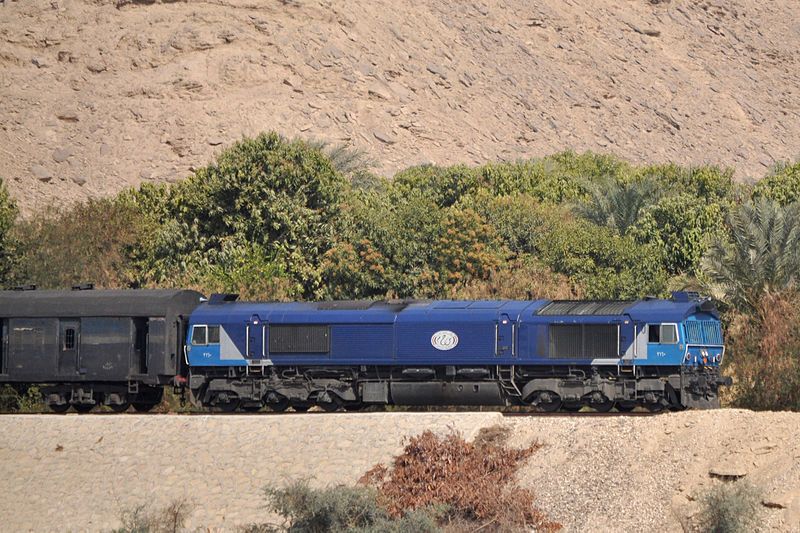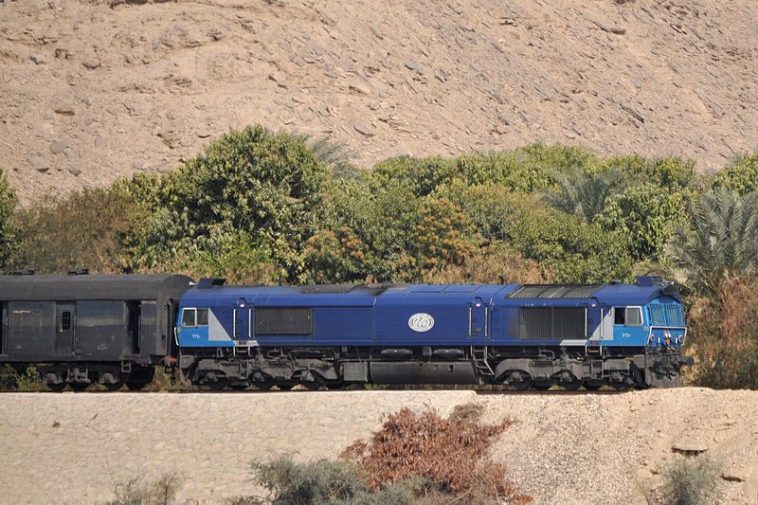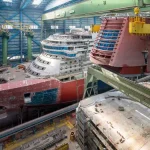
Revamping Egypt’s Freight and Manufacturing Future: An Opinion Editorial
The recent announcement by Deputy Prime Minister for Industrial Development and Minister of Industry and Transport, Kamel Al-Wazir, about the feasibility study for establishing a freight terminal along the 10th of Ramadan–Belbeis railway line has sparked extensive discussion. This development is not only a technical project but also a bold statement on Egypt’s commitment to modernizing its manufacturing and logistics sectors. In my view, this initiative embodies both promise and challenges, and it offers ample opportunity for the nation to address the tangled issues of industrial efficiency, workforce training, and sustainable growth.
The proposed freight terminal, strategically located in the heart of the 10th of Ramadan industrial zone, is designed to streamline the movement of goods to consumption areas and export ports. As Egypt continues to emerge as a regional power in industrial manufacturing and automotive parts production, projects such as this are essential to finding your way through the tricky parts of economic development and maintaining competitive advantages on both the domestic and international stage.
Key Drivers Behind the Freight Terminal Initiative
There are numerous factors fueling the momentum behind Egypt’s freight terminal project. The government aims to upgrade the nation’s logistics infrastructure to meet a rapidly evolving global market. Understanding the critical nature of strategic planning in these sectors is key, and here are some aspects that illustrate why this initiative is a must-have for sustaining economic growth:
- Enhanced Logistics: The new terminal is expected to facilitate smoother transportation, addressing the confusing bits and nerve-racking delays that often occur in traditional freight handling.
- Industrial Synergy: By situating the terminal within an established industrial zone, the project is designed to boost synergies between production facilities and export capacities.
- Workforce Development: The project underscores the critical role of hands-on skills and technical education as provided by the Ministry of Industry’s Productivity and Vocational Training Department.
- Technological Upgrades: Equipment upgrades and modern production facilities will ensure local factories keep pace with global trends.
By addressing these elements, Egypt is not just creating a hub for logistics; it’s setting a foundation to navigate the twists and turns of industrial manufacturing, trade, and workforce development in today’s competitive environment.
Industrial Manufacturing: The Real Engine Behind Egypt’s Growth
The freight terminal initiative is deeply intertwined with Egypt’s broader industrial strategy. In my estimation, success in these projects largely depends on how effectively the government and industry can sort out the overlapping priorities of production capacity, workforce readiness, and sustainable practices.
During his recent visits to multiple factories within the 10th of Ramadan zone, Minister Al-Wazir showcased several success stories in manufacturing—from steel production to textile manufacturing. For instance, El-Gallad Steel, on a 25,000 sqm site, and Ataya Egypt, a company specializing in bridge bearings and expansion joints, illustrate the wide array of industrial activities in the region. These companies are already making significant progress in upgrading production lines and integrating cost-effective machinery, thereby making them competitive both locally and for export.
By boosting facilities like these, the government is taking the wheel in ensuring that every part of Egypt’s manufacturing chain can function at its optimal potential. The focus now is on how these industrial facilities can integrate with and benefit from improved logistics provided by the new freight terminal, making the entire value chain more dynamic and efficient.
Innovative Workforce Development: Training for the Future
A major aspect of Minister Al-Wazir’s nationwide vision is ensuring that the workforce is prepared to handle advanced industrial techniques. This means stepping away from outdated educational models and diving into innovative training programs that mirror the needs of a rapidly evolving labor market.
The Ministry of Industry’s Productivity and Vocational Training Department is partnering with private-sector factories to supervise training centers. This collaboration is crucial because it helps bridge the gap between what is taught in technical programs and the skills needed in the field. As companies like Kama for Coating and Manufacturing invest in state-of-the-art production lines, they also demand that the engineers and workers have refined technical proficiencies. This initiative plays a crucial role in making sure that Egypt does not face skill shortages when it comes to handling modern technologies.
Highlights of these workforce development programs include:
- On-Site Skill Training: Factories actively participating in the training process provide a realistic environment where students can learn the hidden complexities of industrial operations.
- Modern Technology Integration: By adopting new production equipment, workers are encouraged to get into the fine points of digital manufacturing techniques.
- Public-Private Partnerships: Closer collaborations between the government and private companies will help steer through the intimidating parts of upskilling workers.
This kind of proactive strategy is essential for sustaining long-term economic development. It ensures that while Egypt leaps ahead technologically, it also creates a robust support system for the human resources that operate these advanced systems.
Boosting Competitive Advantages in Metal Forming and Manufacturing
One of the standout insights from the minister’s recent industrial tour was the importance of metal forming—recognized as a cornerstone of Egypt’s domestic industry. The 10th of Ramadan industrial zone is particularly notable for this sector, as companies like Pyramids Steel and Kama are already leading the charge. These companies are not only meeting local demand but are also carving out a niche in international markets through exports.
Metal forming is crucial for the production of components for automotive, house appliances, and infrastructure projects. Egypt enjoys competitive advantages in this sector due to several factors:
- Local Material Availability: The country’s plentiful raw materials give manufacturers a significant advantage in reducing production costs.
- Technical Expertise: Skilled labor coupled with modern machinery allows for high-quality output and innovative product designs.
- Investment in Technology: The infusion of capital into new production lines—such as the one for aluminium and steel panels—demonstrates a clear dedication to stay on par with global standards.
- Sustainable Practices: Companies in the region are increasingly recycling waste and scrap metal, reducing carbon emissions and optimizing resource use.
For instance, Kama’s industrial complex not only recycles production waste but also uses it as a clean alternative for reinforcing steel. Such initiatives not only help minimize environmental footprints but reinforce Egypt’s position as a leader in sustainable manufacturing practices.
Cost-Effective Alternatives and Export Expansion
Another significant area to watch is how advancements in production and logistics can open new avenues for export. Minister Al-Wazir’s emphasis on coordinating with the General Authority for Roads and Bridges to explore cost-effective alternatives—like the new aluminium and steel panels meant for building façades and metro stations—is a prime example. By finding your way through the complicated pieces of cost management, Egypt can reduce its reliance on imported materials, thereby saving on foreign exchange and boosting local industries.
To elaborate further, here are some key benefits associated with these cost-effective innovations:
| Benefit | Explanation |
|---|---|
| Lower Import Costs | Using domestic production alternatives reduces the need for imported materials, saving valuable foreign exchange. |
| Improved Export Competitiveness | Enhanced production capabilities and cost savings can lead to more competitive pricing on the international market. |
| Boosting Local Industry | Directly supports domestic manufacturing, increasing employment opportunities and local economic growth. |
| Environmental Sustainability | With recycling initiatives, companies contribute to reducing environmental impact and promote circular economy practices. |
Through these measures, Egypt is not only working to streamline its manufacturing processes but also sharpening its competitive edge in the global marketplace. In the long run, this could pave the way for a robust export economy, particularly as industrial sectors continue to expand and diversify.
Leveraging Logistics Infrastructure: A Game Changer for Egypt’s Industrial Sector
Effective logistics infrastructure is perhaps one of the most critical elements in modern manufacturing and trade. The study for a new freight terminal along the 10th of Ramadan–Belbeis railway line is a perfect example of the country’s efforts to sort out the confusing bits of traditional supply chains. Transportation inefficiencies can often be overwhelming and off-putting for manufacturers who need seamless connectivity between production sites and markets.
An improved logistics framework will allow companies to:
- Speed Up Deliveries: Reduced transit times lead to faster turnaround, improving overall supply chain efficiency.
- Cut Transportation Costs: Streamlined freight operations can significantly lower the cost per unit of goods transported.
- Enhance Export Capabilities: A modern terminal directly connected to industrial zones can expedite export processes, leading to greater market competitiveness.
- Improve Asset Utilization: Facilities like this allow for more efficient loading and unloading, optimizing the use of transportation assets.
Such improvements are especially important for industries like automotive and industrial manufacturing, where the quick and efficient movement of goods is essential. By ensuring that products reach domestic and international consumers promptly, Egypt can attract further foreign investment and stimulate additional industrial growth.
Overcoming Technical and Logistical Challenges
While this ambitious project promises many rewards, it is not without its tricky parts. The path to establishing a modern freight terminal is strewn with technical challenges and tangled issues that must be carefully managed. Here are a few of the key challenges along with possible strategies to address them:
- Coordinating Multi-Stakeholder Efforts: Successful execution will require coordinated efforts between government bodies, private enterprises, and local communities. Creating clear communication channels and regularly scheduled progress reviews can help manage this complex network.
- Upgrading Infrastructure: Modernization of digital and legislative infrastructure must go hand in hand with physical improvements. Allocating sufficient budgets and employing industry experts to oversee implementation will be crucial.
- Ensuring Workforce Readiness: As production processes incorporate advanced technologies, the workforce must adapt. Ongoing education and training, coupled with incentives for skill development, can ease this transition.
- Maintaining Sustainable Practices: Integrating green initiatives into the production process, such as recycling waste into useful materials, calls for a balanced approach between profitability and environmental care.
Each of these challenges, while intimidating, can be managed through proactive policy measures and collaborative efforts between all involved parties. It is also essential that the government continues to maintain an open dialogue with businesses on the ground and remains responsive to emerging needs and feedback.
Bridging the Gap Between Industrial Capacity and Global Standards
Minister Al-Wazir’s visits to various factories—ranging from El-Gallad Steel to Egy Denim Textile—demonstrate a strong commitment to ensuring that Egypt’s industrial output meets global standards. The introduction of new production lines, such as those for aluminium and steel panels, signifies more than just a technical upgrade; it represents a step toward bridging the gap between domestic capacity and international competition.
In every industrial visit, the emphasis was clear: Egypt must modernize its manufacturing processes and workforce training to remain competitive. The underlying message is that to remain on par with global trends, Egypt must be willing to invest in its industries, adopt modern technologies, and above all, foster a culture of continuous improvement. This dynamic evolution is essential for ensuring that local manufacturers can figure a path through increasingly tangled international markets.
By aligning with international logistical and manufacturing standards, Egyptian industries can better position themselves for integration into global supply chains. This integration is further reinforced by Egypt’s competitive advantages, such as the local availability of raw materials, established expertise in metal forming, and growing technological investments that each contribute to a more robust and adaptable manufacturing ecosystem.
Sustainable Industrial Practices: The Future is Green
No discussion on modern industrial manufacturing is complete without addressing the environmental implications. One of the most commendable aspects of Egypt’s recent industrial strategy is its commitment to sustainable practices. At facilities like the Kama industrial complex, every effort is made to recycle production waste, transforming scrap metal into clean alternatives for reinforcing steel. This not only helps reduce production costs but also cuts down on carbon emissions—a significant benefit for both industry and the environment.
Key steps that underline the country’s green strategy include:
- Waste Recycling: Converting scrap metal into usable materials that can reduce environmental footprints.
- Energy Efficiency: Modern equipment and streamlined operations contribute to more energy-efficient production processes.
- Cost Optimization: Sustainable practices often result in significant cost savings which can then be reinvested to further modernize production facilities.
- Long-Term Environmental Benefits: Reducing emissions and waste helps create a healthier ecosystem, contributing to long-term societal well-being.
These initiatives are a testament to the fact that economic growth and environmental sustainability need not be mutually exclusive. In fact, by committing to green practices, Egypt is paving the way for a more resilient industrial sector that can endure the challenges of both global market pressures and environmental constraints.
Economic Implications for Small Business and Local Industry
While the freight terminal project is geared toward boosting large-scale industrial output, its benefits are likely to trickle down to support small businesses and local industry at large. The improved logistics and manufacturing efficiencies will create a ripple effect, benefiting numerous small-scale enterprises involved in related sectors, from component manufacturing to supply chain support services.
Some ways in which small businesses stand to gain include:
- Enhanced Access to Markets: Improved logistics mean that even smaller producers can reach larger domestic and international markets more efficiently.
- Lower Operational Costs: Streamlined supply chains can translate to lower transportation and storage costs, helping small businesses stay competitive.
- Boost in Local Employment: As industrial hubs expand, small businesses adjacent to these hubs often see increased demand for their products and services.
- Technology Transfer: Collaboration with larger firms introduces small businesses to modern technologies and production methods, driving overall industry improvements.
This interconnected growth model suggests that investments in large-scale projects are not isolated efforts; they form a backbone that supports and stimulates smaller economic players. In many respects, this approach is key to building a robust and resilient economy that can thrive even in the face of global uncertainties.
Charting a Course for a Resilient Future Amid Global Challenges
Globally, industries continue to face overwhelming and nerve-racking challenges—ranging from supply chain disruptions to fluctuating market demands and trade uncertainties. In this context, Egypt’s focus on upgrading its logistics and manufacturing infrastructure appears both timely and strategic. The freight terminal project serves as a pathway to work through the complicated pieces of modern industry, offering a solid foundation for economic resilience.
Several strategic steps are necessary to ensure long-term success in these endeavors:
- Robust Infrastructure Investment: Ensuring that all physical and digital infrastructures are modernized and adequately funded to meet the needs of contemporary trade.
- Enhanced Policy Frameworks: Adapting regulations to support rapid innovation and reducing bureaucratic delays that often hinder progress.
- Continuous Workforce Upskilling: Developing a future-ready workforce through integrated and ongoing training programs in collaboration with key industry players.
- Public-Private Partnerships: Fostering a collaborative environment where both government and business work in tandem to achieve shared objectives.
Implementing such measures would help Egypt not only weather the current global economic pressures but also emerge as a formidable competitor in the international market. By building a resilient infrastructure and investing in its human capital, Egypt is laying the groundwork for sustainable growth that can adapt to the subtle details and slight differences in global market trends.
Industry Experts Weigh In: Balancing Optimism with Caution
It is important to consider the perspectives of various industry experts who have been closely following these developments. Many applaud the government’s initiative for its forward-thinking approach, while some caution that the path ahead is full of problems and riddled with tension due to legacy issues and infrastructural shortcomings. The challenge lies in striking the right balance between optimism for what is possible and pragmatism in addressing the complicated pieces of implementation.
Experts point out that:
- Successful projects require a proactive stance from both public and private sectors.
- Continuous monitoring and adjustment of policies are necessary as market conditions evolve.
- Addressing workforce gaps through targeted training programs will be key to keeping pace with technological advancements.
- Environment-friendly manufacturing processes should not be sidelined in the pursuit of rapid industrial expansion.
This balanced approach, which combines cautious optimism with strategic planning, will be crucial in ensuring that Egypt’s ambitious projects deliver sustainable, long-lasting benefits.
The Road Ahead: Strategic Recommendations for Industrial Progress
Drawing from the extensive discussions surrounding the freight terminal and industrial modernization projects, several recommendations come to mind for policymakers, business leaders, and stakeholders:
- Invest in State-of-the-Art Infrastructure: Allocate resources to not only build new facilities but also upgrade the existing ones, ensuring they are aligned with modern global standards.
- Enhance Collaborative Training Programs: Strengthen public-private partnerships to develop robust training centers that equip the workforce with the necessary technical skills and practical experience.
- Streamline Regulatory Processes: Simplify policies and create flexible frameworks that can quickly adapt to changes in the global market environment.
- Promote Green Manufacturing Practices: Encourage recycling initiatives and sustainable production methods that not only cut production costs but also minimize the environmental impact.
- Foster International Partnerships: Leverage Egypt’s competitive advantages to create strategic alliances with global firms, enhancing both export capabilities and technology transfers.
By embracing these recommendations, Egypt can effectively tackle the twisting challenges posed by modern industrial and logistical demands, ensuring that every aspect—from factory floors to export docks—is optimized for success.
Conclusion: A Vision for a Modern and Resilient Egypt
In conclusion, the feasibility study for establishing a freight terminal along the 10th of Ramadan–Belbeis railway line marks a turning point in Egypt’s industrial narrative. While there are intimidating and complicated pieces to overcome, the project represents a bold commitment to revolutionizing the country’s logistics and manufacturing landscapes.
Egypt is at a crossroads where strategic investments in infrastructure, workforce development, and sustainable practices can set the stage for a thriving industrial future. By aligning local capabilities with global demands, the nation is not only finding its way through immediate operational challenges but is also charting a course toward long-term economic resilience.
It is imperative that stakeholders – from government bodies to private enterprises and from industry experts to the everyday worker – work together to sort out the multi-faceted issues that accompany such an ambitious undertaking. In doing so, Egypt can transform this freight terminal project from a promising feasibility study into a booming hub that drives industrial success and supports the broader economic ecosystem.
The road ahead will undoubtedly feature both opportunities and setbacks. However, with clear vision, persistent coordination, and a commitment to embracing modern, sustainable practices, Egypt can confidently step into a future where its industrial capabilities match and exceed global benchmarks. The potential is enormous—if managed with a hands-on and collaborative spirit, this project will serve as a model for others in the region and beyond.
In the end, Egypt’s journey through these modern challenges is a story of transformation and hope—a narrative that reminds us all that while the twists and turns may be nerve-racking and intimidating, progress is built one innovative step at a time.
Originally Post From https://www.dailynewsegypt.com/2025/08/10/egypt-studies-establishment-of-freight-terminal-on-10th-of-ramadan-belbeis-railway/
Read more about this topic at
Empowering Industrial Connectivity with Cervoz
Industrial Connectivity Services


